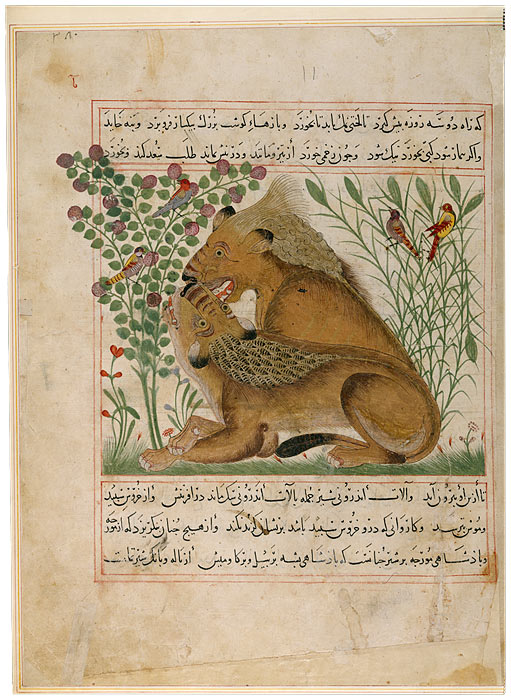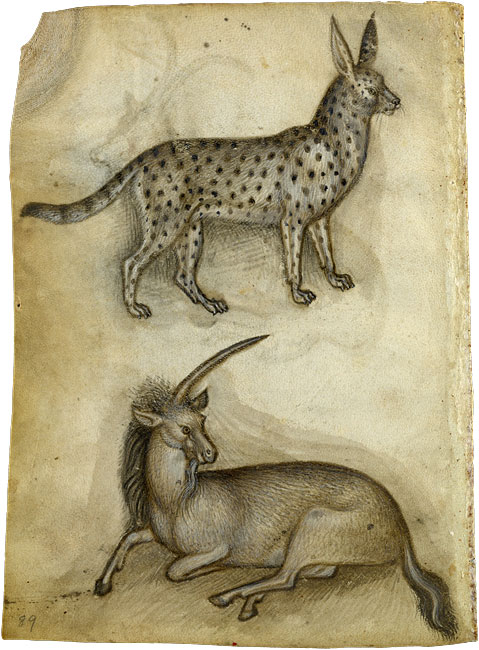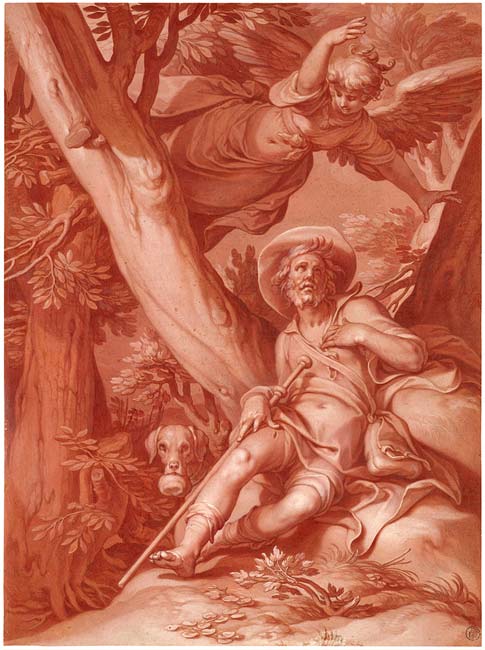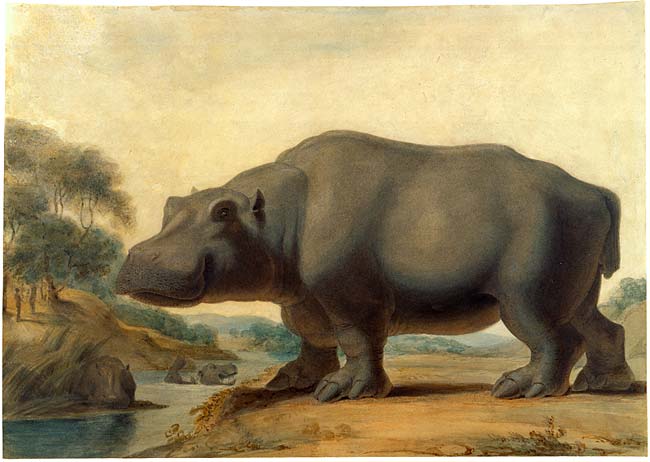Plan your visit. 225 Madison Avenue at 36th Street, New York, NY 10016.
Plan your visit. 225 Madison Avenue at 36th Street, New York, NY 10016.
In the Company of Animals: Art, Literature, and Music at the Morgan
Manāfi˓-i al-ḥayavā (The Benefits of Animals), in Persian
for Shams al-Dīn Ibn Żiyā˒ al-Dīn al-Zūshkī
Purchased by Pierpont Morgan, 1912
The King of Animals
One of the most beautiful of all surviving Persian manuscripts, this work describes the nature of humans, animals, birds, reptiles, fish, and insects as well as the medicinal properties and benefits of their various parts. The lion, according to the text, "is the strongest and most powerful" animal, yet "he is afraid of a white rooster and a mouse.... He flees from nothing as he does from a little ant." When he senses he is being followed by a hunter, "he effaces his footprints behind him with the end of his tail." As for the lion's medicinal benefits, "the tooth of a lion tied on a child makes teething easy."
Worksop Bestiary, in Latin
Purchased by Pierpont Morgan, 1902
A Book of Beasts
The bestiary, a collection of animal descriptions interspersed with biblical comparisons and moral tales, was a popular text in the Middle Ages. It is an adaptation of an earlier Greek work, the Physiologus. This manuscript is one of the earliest with fully painted pictures. " The ox is noted for its kindness to other oxen, "for each of them demands the company of that other one with whom he has been accustomed to draw the plough by the neck."
Der Renner, in German
Purchased in 1930
The Lion and the Donkey
This lengthy poem, a collection of allegorical and moralizing tales drawn from the Bible, Aesop, bestiaries, and other sources, is titled Der Renner (The Runner), as Trimberg intended it to travel throughout Germany. In the image on the left, the lion has been elected king of the animals and has assembled them to report to him their names and ancestries. Attempting to hide his humble origins, the donkey is cagey about his lineage. The fox finally speaks up and reveals that the donkey owned by the baker is the donkey's father: "faithfulness and simplicity dwell in [his father], and he supports himself by honest toil and to no one does any harm." There is no shame in admitting one's humble origins.
Aesop's Fables with His Life: in English, French & Latin
London: Printed by William Godbid for Francis Barlow, 1666
Gift of Ruth J. Heffelfinger, 1974
Aesop and the Animals
Although Aesop is credited with many of the fables that are still known today—The Tortoise and the Hare, for example—no writings directly from the Greek storyteller's hand survive. This legendary edition of the fables was lavishly illustrated by Francis Barlow, one of the most accomplished animal and bird painters in seventeenth-century England. The left-hand page of the book depicts Aesop among the animals, his closeness to them confirming his reputation as the best interpreter of their thoughts and motivations: "See here how Nature's Book unclasped lies / Whose pages Aesop reads with pearcing eyes."
Lynx and a Recumbent Unicorn
Verso: Recumbent Ibex and Dog
Inscribed in lower left corner, in graphite, 89
Purchased by Pierpont Morgan, 1909
A Page From a Medieval Model Book
Unsure what a lynx looks like? If you were a medieval artist, a model book like this one would have been the place to check. Model books were essential reference works for medieval artists who wished to depict animals. Rendered in careful detail, the animals appear in profile, in static positions devoid of background. They were drawn generally not from life but copied from earlier depictions in older model books or works of art, as is obviously the case with the unicorn. Even more than one hundred years later, the unicorn was believed to exist.
Gray Rabbit: Old Male, Female, and Young
Purchased by Pierpont Morgan, 1910
Audubon's Rabbit
This drawing is a preparatory study for an image that appears in The Viviparous Quadrupeds of North America (1845–48). The text accompanying the image comments on the rabbit's pesky habits: "It often makes inroads upon the kitchen-garden, feasting on the young green peas, lettuces, cabbages, &c., and doing a great deal of mischief." On the verso of this drawing, Audubon wrote a very personal note: "I drew this Hare during one of the days of deepest sorrow I have felt in my life, and my only solace was derived from my Labour. This morning our beloved Daughter [-in-Law] Eliza died."
St. Roch
Gift of J. P. Morgan, Jr., 1924
St. Roch's Faithful Dog
St. Roch, the patron saint of plague sufferers, is shown here in all his agony. Resting at the base of a tree, a wound on his leg and the pain evident in his face, he is watched over by an angel. His only companion is a dog, who has brought him some bread. The legend is that this dog—in some versions, the dog was St. Roch's, and in others, the dog belonged to a local nobleman—brought bread every day and licked his wounds to heal them.
Hippopotamus
Purchased as a gift of Mrs. Peter McBean
Hippopotamus From Botswana
The English painter Samuel Daniell traveled to South Africa in late 1799, during the first British occupation. Two years later he was appointed secretary and draftsman of a government trading mission sent to Bechuanaland, now Botswana. The present drawing was done on this six-month-long expedition, during which Daniell sketched and recorded views of indigenous animals in their natural habitats. This hippo, who dominates his surroundings, appears in Daniell's book African Scenery and Animals, published in 1804.
Royal Tiger
Signed at lower right in pen and brown ink, Eug. Delacroix.
Thaw Collection
Tiger Tiger
The French artist Delacroix was drawn to exotic cats. "Tigers, panthers, jaguars, lions, etc. Why is it that these things have stirred me so much? Can it be because I have gone outside the everyday thoughts that are my world; away from the street that is my entire universe?" The first living royal, or Bengal, tiger arrived in Paris in 1831, and Delacroix and his good friend Barye, the animal sculptor, often visited the menagerie at the Jardin des Plantes to observe the majestic creature.
Blind Owl
Thaw Collection
© 2011 Jim Dine / Artists Rights Society (ARS), New York










